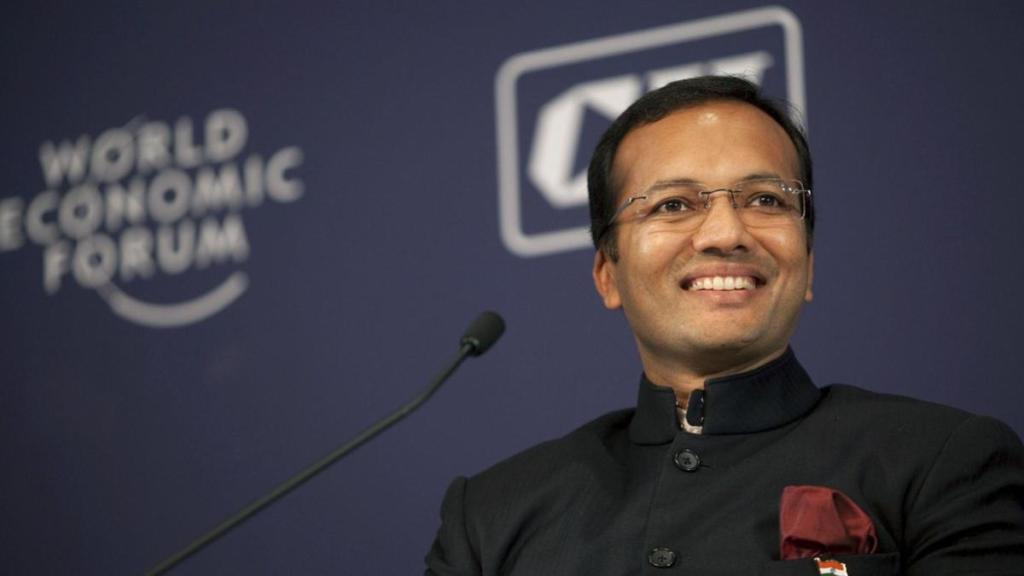When Naveen Jindal returned to India after completing his MBA in the US in 1992, the then-existing Flag Code of India limited the display of the national flag to special occasions. This sparked a quiet rebellion in the young industrialist’s mind, setting in motion a legal battle that would span 10 years. The chairman of Jindal Steel and Power argued that the flag wasn’t just a cloth but a symbol of identity, a unifying force in a diverse nation. On January 23, 2004, the Supreme Court delivered its verdict — a landmark decision resonating nationwide. The right to display the Tricolour by all citizens throughout the year was upheld, enshrined as a fundamental right under Article 19(1)(a) of the Constitution. Ahead of its 20th anniversary,
Kunal Doley spoke with Jindal to know what the Tricolour means to him, why he fought the legal battle, the changes that he has noticed over the years, and more. Edited excerpts:
What changes have you noticed over the years since the historic SC judgment?
The historic 2004 Supreme Court judgment was a turning point in our nation’s narrative. Over the years, I’ve witnessed a remarkable transformation in how Indians embrace our national flag. From a limited display on specific occasions, the Tiranga now proudly adorns homes, institutions, and public spaces throughout the year. It has become a symbol of everyday patriotism, a testament to the resilience of our people. This positive shift in mindset fills me with pride and optimism, signalling a deeper connection between citizens and our national identity.
What made you fight the legal battle for the Tricolour?
My legal battle for the right to fly the Tiranga was rooted in the conviction that every Indian should have the freedom to express their love for the country without hindrance. It was about breaking down bureaucratic barriers that stifled the very essence of patriotism. The flag, a symbol of unity, was unfairly restricted by certain rules at that time, not allowing common citizens to hoist it 365 days of the year. It was a fight for the fundamental right to uphold our national identity, not just for me but for every citizen who desired to display the Tricolour with pride and without constraint.
What does the Tiranga mean to you?
Tiranga, our cherished national flag, is more than a symbol; it’s a living testament to the indomitable spirit of India. To me, it represents the collective dreams, struggles, and triumphs of our people. It stands tall as a beacon of unity, reminding us of our shared heritage and the incredible diversity that makes our nation unique. Each hue in the Tricolour tells a story, and for me, it symbolises the unwavering commitment to the ideals of courage, peace, and vibrancy that define the essence of India.
Do campaigns like Har Ghar Tiranga help in instilling patriotic fervour?
Absolutely. Initiatives like Har Ghar Tiranga play a pivotal role in fostering a deeper sense of national pride and belonging. However common citizens still had some information gaps about if they should hoist the flag 365 days. Thus now we have launched the Har Din Tiranga campaign under Flag Foundation India to fill this information void. The visual spectacle of Tiranga adorning countless homes creates a powerful sense of unity and shared purpose. That is why we call it Har Din Tiranga — Har Ghar Tiranga. Beyond symbolism, these campaigns spark conversations, instil a sense of responsibility, and inspire a commitment to contribute to the nation’s growth. They serve as a reminder that our strength lies in our unity, diversity, and our shared allegiance to the sacred Tricolour.
Additional thoughts or observations regarding the Tricolour?
The Tricolour is not merely a flag but a timeless embodiment of our collective aspirations. Its beauty lies in its simplicity, yet it carries profound meaning. Let’s not only unfurl the Tiranga with pride but internalise the values it represents. We should do our bit to achieve such unparalleled landmarks which make our Tiranga fly in all valuable arenas of the world. If I fulfill my responsibilities with integrity, and if every Indian diligently performs their duties with sincerity, we can collectively shape the India we aspire to see. May the Tiranga inspire us to build a nation that reflects the ideals of tolerance, brotherhood, and progress. Every day is an opportunity to reaffirm our commitment to making India a nation worthy of the resplendent Tiranga.

